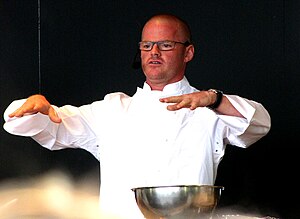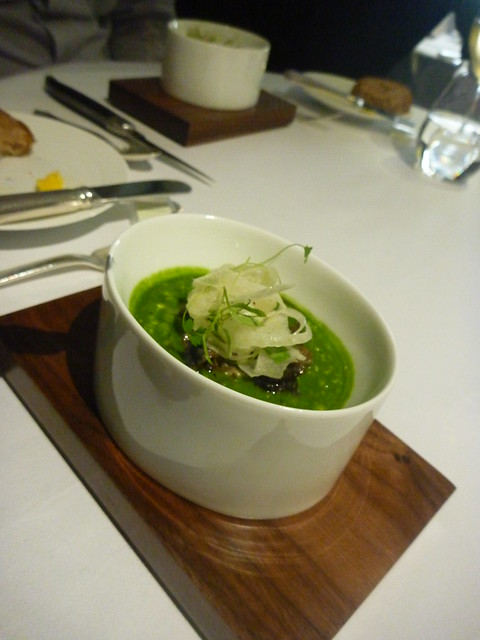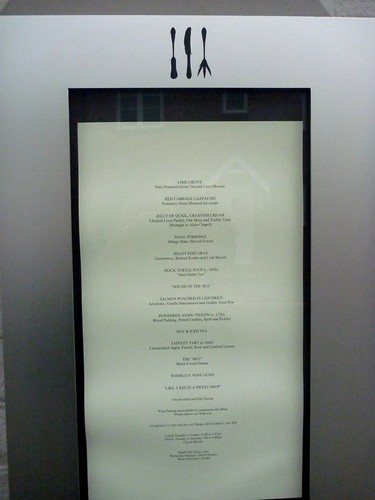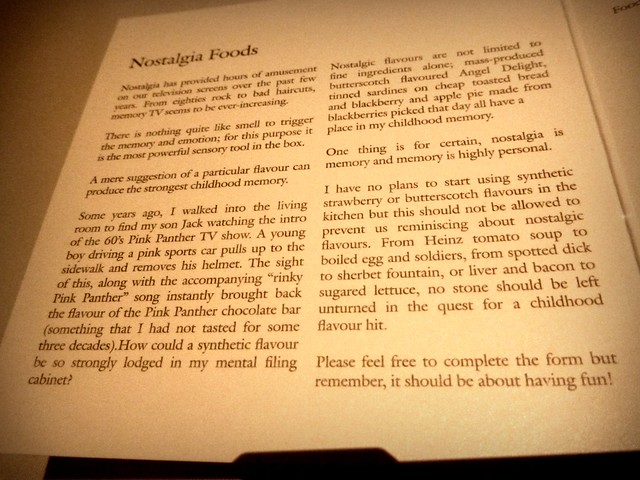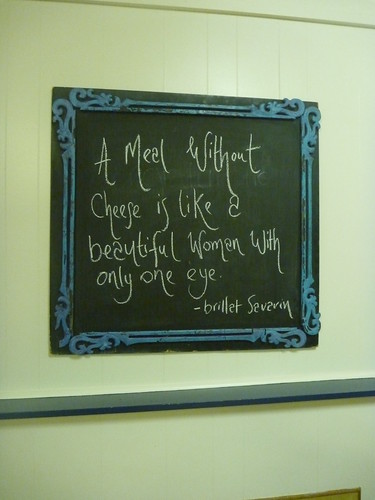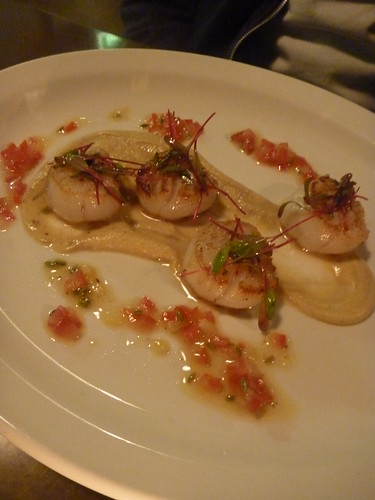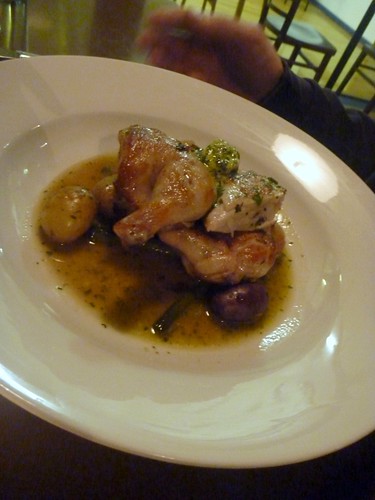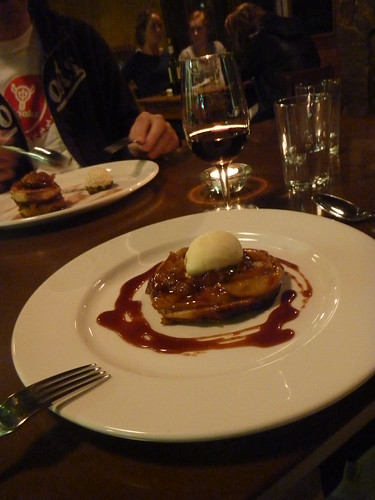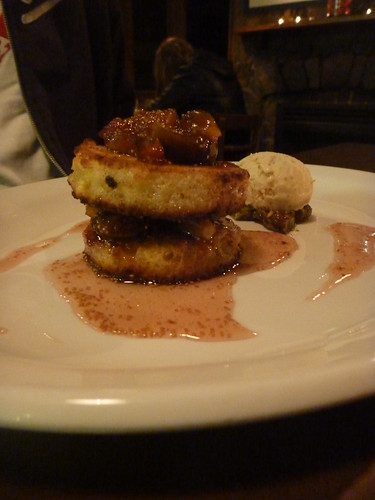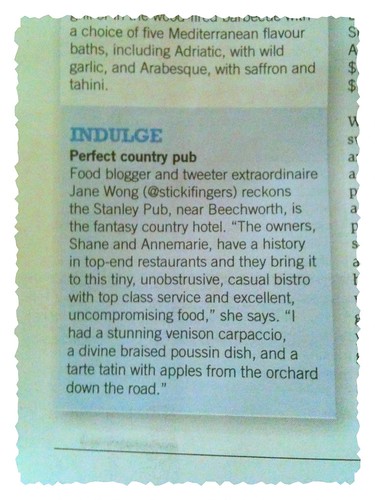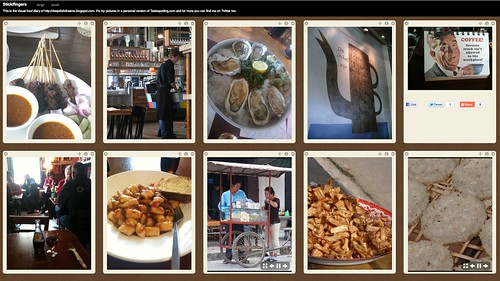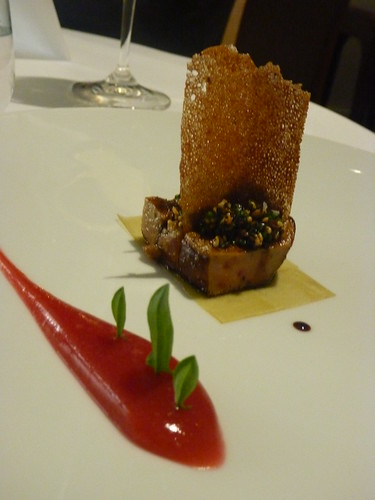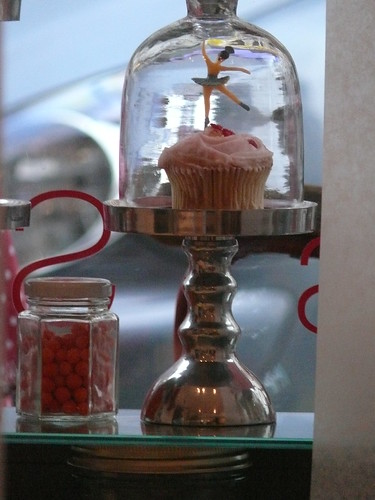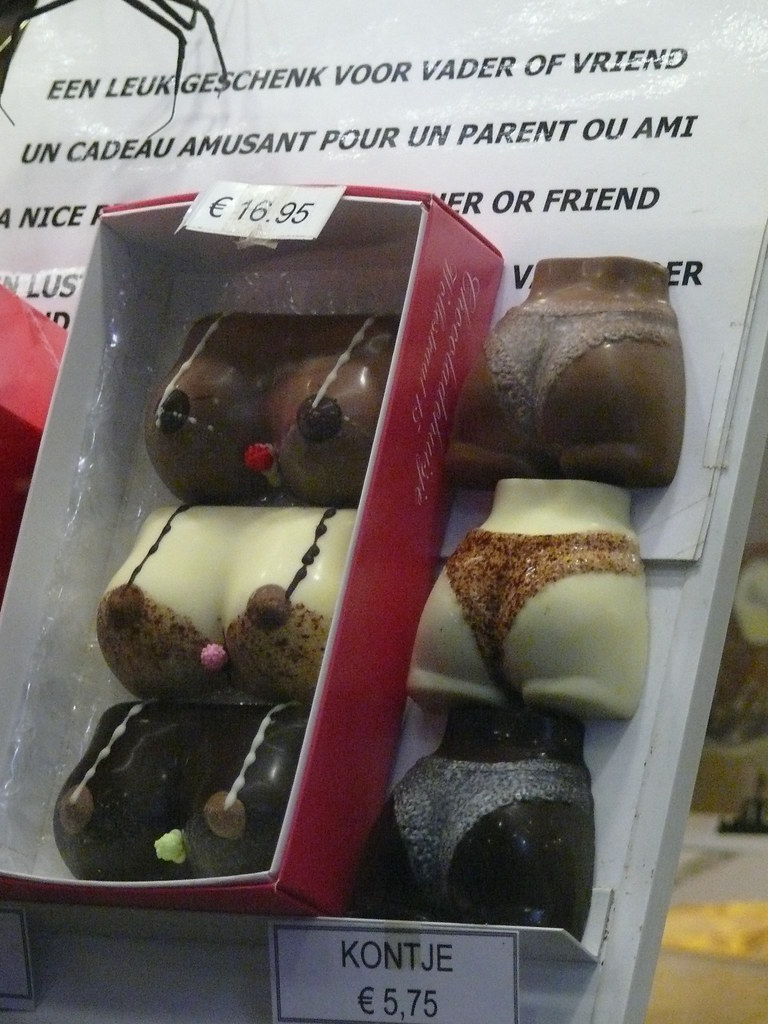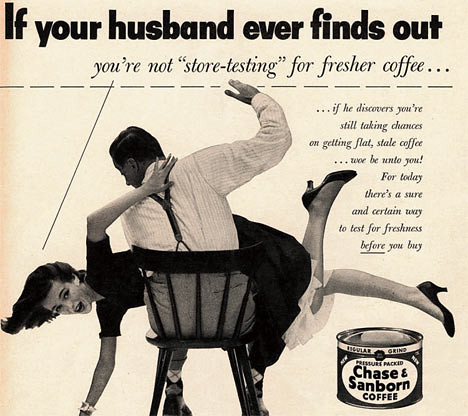 |
| Photo by Sean Bonner |
“Your vision will become clear only when you look into your heart.
Who looks outside, dreams. Who looks inside, awakens.”
Carl Gustav Jung
Swiss psychiatrist, Psychologist and Founder of the Analytic Psychology, 1875-1961
Hook, line and sinker
In Australia if the traditional Food Media want to incite an online riot of opinion, they merely need to criticise Food Bloggers. It’s a story guaranteed to hit a raw nerve that is common to all bloggers: the validation of their medium. The provocation will result in debate and a frenzy of hits and backlinks to the article from bloggers, tweeters and readers who subsequently comment across many social media platforms.
But what many amateurs in the online
space do not realise, is that they have deliberately been tricked into rage. The
whole exercise may have been calculated to create a spike in online newspaper
readership figures, to lift the number of page-views, organically boost the
paper’s SEO and online influence figures. So the respondents involved will have
played right into the hands of the newspapers for marketing purposes.
By publicising the story and spreading
the word in social media, the bloggers and tweeters have unconsciously created
sufficient free PR to yield above average traffic to the newspaper. The
resulting online figures now look great to advertisers contemplating whether to
pay for ad space in their publication, iPhone app or online edition.
Some might consider this calculated
emotional abuse. For the paper it’s an easy win, requiring no financial investment,
and with their readership looking reinvigorated, they can potentially rake in
hundreds of thousands of dollars from brand media buyers. Thanks to bloggers,
the sales and marketing team will likely have hit their projected targets.
These stories are known as link
bait. It’s a controversial marketing ploy and is not the only time that
Aussie food bloggers fall for commercial tricks.
This works through psychological
manipulation. The technique in this case is known as ‘shaming’ and ‘vilifying’.
Think of it as the overbearing parent who tells their children that their
grades aren’t good enough. It’s bound to get a reaction from most on the
receiving end of the criticism. And yet the same result can come slyly packaged
as flattery, for the same purposes.
Modern
Marketing Ninjas
As long time readers of this blog will know I have spent a quarter century in the business of advertising and marketing. My profession has been to make all manner of things desirable to the general public via a mixture of manipulative psychology, beautiful imagery and by generating hype. My technique uses a combination of strategy based on psychographic manipulation and lateral thinking combined with creative input.
Today anyone marketing a product, service, venue etc, faces tough
times. The general public are now more sceptical of marketing imagery on TV and
in print than they ever have been. They can filter their entertainment to avoid
most advertising that they find intrusive or annoying. Some products have even been
banned from traditional advertising media. So with marketers facing increasing
sales targets from their employers, the search has been on to find a way to
advertise surreptitiously.
And what exactly is this hidden advertising or guerrilla marketing?
The most common ninja deployed
is product placement. Take Australian Masterchef for example. The products you
see being used have been provided by the brand advertiser in exchange for six
figure sums to the TV production company.
This may be reinforced by advertising around the show, costing
millions, paid to the TV network - whether aired on TV or their magazine’s ads
or even on the Masterchef website and recipe fact sheets. The aim is that the
general public will subconsciously identify branded products as being desirable
or necessary next time they stock their pantry. The wealthiest brands also use
product placement in Hollywood movies and popular drama or comedy TV series,
reaching significantly larger audiences.
But shows like Masterchef are not on TV all year, so food brands
in particular - and especially those with smaller budgets - are forced to be
more creative in finding their target market.
The trending buzzword for advertisers is ‘Word of Mouth Marketing’.
The power of recommendation by a friend or trusted source is now recognised as
the ultimate way to convey a marketing message that will generate sales.
Magazine or newspaper Advertorials are a word of mouth option. It
looks to all intents like a magazine story, it has been composed by a
journalist and the staff photographer, but it’s actually a sponsored piece, a
revenue stream for publications. It costs the advertiser in design, photography
and media placement fees.
Advertorials are designed to trick you into thinking the
‘discerning Magazine Editor’ prefers that product/brand. Advertorials state
‘advertising feature’ or ‘promotion’ at the top of the page revealing its true
nature. But even this is wearing thin with the public. So where else can
advertisers create hidden influence?
There is a marketing term, “Hitting all the consumer touch
points” and that now also includes product placement and advertorials or infomercials
on blogs. So bloggers who have appeared in mainstream media stories, who have
released details of high page view numbers, or high Twitter follower counts and
a track record of influence, are the new target for marketing.
They are known generically as ‘online influencers’ and are now
subject to heavy lobbying by PR companies and advertising agencies. Many of us
in food blogging know it as the dreaded PR spam in marketing circles it is
known as Blogger Outreach Programs and Blogger Bribes.
The attraction lies in the notion that an advertiser can covertly
target the exact demographic required through a food blog. Just as they can in
the food press, but with possibly an even narrower skew – such as Baker blogs
having a high readership of those who also love to bake, or venue review blogs
that back-link to Urbanspoon and attract people who regularly go to
restaurants. Plus bloggers are more adept at using multiple social platforms
including Twitter, Digg, Stumbleupon and Facebook in their broadcast mix than
traditional food media, which equates to even more publicity hitting the
target.
Your new BFF
So, in Advertising strategy, bloggers are now seen as cheap and easy puppets for marketing messages as compared to traditional forms of advertising. By example, many food bloggers have already shown a predilection for going to events and receiving freebies in exchange for a blog post on their attendance or promotional item, so why not cosy up to them? Brands now aim to be your BFF.
After all, most who write
blog review posts, will happily spend their own money trying venues and
unsuspectingly giving free PR to the venue, so in advertising terms, why not
extend that to products, loyalty clubs and services too? The potential is there
for a brand’s new online ‘friends’ to generate free blog advertorials and
extended social media broadcast too.
For brands, blogger outreach is significantly cheaper than paying
publications for the same. Plus the blogger does all the design work, copywriting
and photography for free - services that cost tens of thousands of dollars to
commission professionally. Giving away samples, organising an event or junket
to bloggers can be much cheaper by comparison.
It’s also a way for PR agencies and Blog Harvesters such as
Nuffnang, Technorati and Foodbuzz to farm bloggers in order to make money on
the back of this free resource. Typically it works by charging brands for
harvested email databases or for permissions received from the bloggers. Some harvesters
will potentially pay bloggers a small fee lower than market value for
commercial digital insertions in return.
Others companies to farm bloggers are market research companies and
new hybrid harvesters who charge bloggers to be part of a directory that will
build page rank and SEO plus marry your blog with advertisers and PR agencies.
Trust issues
It is a given that journalists’ salaries are derived from publications’ advertising revenue, and hence edited opinions can be biased. So blog readers typically cite their interest is due to content being unrestrained by editors, advertisers or a commercial publication’s particular values or politics. Marketers are aware that many of the public have eschewed papers and magazine for blogs, in search of the truth.
So blogs appear to have integrity. It is generally supposed by
the public that they are not affected the way that news has been tainted. They
represent Jo Average’s opinion. So when a blog broadcasts about brands, the
reader assumes it is a personal and unbiased opinion and recommendation that
has not been initiated by an advertiser or fuelled by supplied content.
But this is increasingly not true. A blog post can be a ‘Stealth Marketing’
brand ninja, especially where many amateur food bloggers have not publicly
declared their shift to becoming professional salesmen, or pro-bloggers in
exchange for gifts or money.
This is compounded by the fact that bloggers seem to be unaware of
the ACCC
Advertising and Selling standards stating advertisers should “ensure that
consumers are aware of the fact that a commercial message is being presented”.
Bloggers are required to clearly mark that the post is a sponsored
piece, as per an advertorial or infomercial is transparent about its bias. It’s
possible that many PR agencies and marketers seem not to know this either or
perhaps are happy to parlay the deception and puffery?
Since some food blogs have already fallen under the spell of the
PR machine, the term Flogger-Blogger has emerged. By this I mean when a blog
that feels to all intents as though most posts are actually subliminal ads,
designed to have your friends share the good word and generate publicity for a
brand by spreading the post across the internet, conversations and by email. Ultimately
this is the goal of marketing through amateur bloggers.
The
Seduction of Eve
I think that most Australian food
bloggers have innocently entered the media as a place to air their thoughts,
but appear vulnerable to the potential traps of that space. The traps I refer
to are those of potential loss of integrity and falling victim to commercial
manipulation. And I sense that some Food Bloggers are falling victim to Fox and Crow syndrome.
So what are the tricks to look out for?
Behind most modern marketing tricks is psychology - the study of human
behaviour - and how to take advantage of these insights to assist selling
things.
"According to George K. Simon, successful psychological manipulation primarily involves concealing aggressive intentions and behaviours. Also, knowing the psychological vulnerabilities of the victim to determine what tactics are likely to be the most effective."
The most fundamental aspect that is
taken advantage of by marketing and advertising is the human desire to feel
good. It is thought that we tend to see our life as judged against other people
and that our happiness is relative to this.
We compare our lot against others.
Richer people do get happier when they compare themselves against poorer
people, but poorer people are less happy if they compare up. That is why Marketers
target our self esteem when aiming to seduce us for their purposes
Nathaniel
Branden in 1969 defined self-esteem as "...the experience of being
competent to cope with the basic challenges of life and being worthy of happiness".
According to Branden, self-esteem is the sum of self-confidence
(a feeling of personal capacity) and self-respect
(a feeling of personal worth).
He also claimed that any positive
stimulus or incentive will make a person feel comfortable, or, at most, better
with respect to themselves for just some time.
So when a PR company, brand or Marketer
approaches a blogger to promote their cause, they will – like Eve’s serpent –
cajole and flatter us, tell us that we are deserving of special treatment and
offer a sense of personal exclusivity that will make us feel a step ahead of
others. They will talk it up with honeyed terms such as “You have been
especially chosen to become a Brand Ambassador” or appeal to your desire to
have something you can’t afford.
Society has been warned against this
behaviour for all of time. Religion and the arts play it out as an enduring
theme, cautioning against allowing our shallow desires to trip us up. Yet it
proves constantly irresistible to this day, the tactic of ‘positive
reinforcement’ is one of the most powerful to encourage Bloggers to generate
income for others with no significant remuneration in return for their
services.
A
mere pat on the head
I like to think of the next trick as
summed up by the adage ‘Beware Greeks
bearing gifts’ the ‘Trojan
Horse’ analogy. While we may warn children not to go with strangers offering
gifts, bloggers seemingly also neglect to take that advice. Instead, they are
fooled into dropping their guard.
A blogger’s vulnerability in this case
is typically coined in psychology as using ‘reciprocity’.
The trick is, when given something for free we feel obliged to return the favour.
So in our circles when offered a free meal, product, event, book etc, we feel
indebted to write a blog post about that gift, often without criticism or
significant insight.
Like a dutiful child, we write a public
thank you note on social media platforms, which form free publicity for the
marketer, brand, service or venue. We take photos, design and cultivate a post –
often giving away our intellectual property rights in the bargain – and with theoretically
even better results for the brand than ads, because blogs communicate to
exactly the right consumers for the promotion.
So the marketing goal is achieved. For
virtually a fraction of the cost spent on advertising or loyalty marketing, the
blogger has obligingly become a puppet, as a brand salesperson.
In return, the blogger likely receives
a regular deluge of press releases with the expectation of future publication
each time, with little or no further reward or remuneration for giving away
many thousands of dollars of free PR. In
the psychology of persuasion this is known as ‘consistency’. People want
to be consistent with previous actions. If they said yes to something in the
past, they’re more likely to say yes in the future.
Meanwhile the PR agency that approached
the blogger in the first instance will be receiving a monthly retainer for
their services and possibly project fees – but who really is doing all the work
here? Who has generated the sales? Who deserves to be paid? It is the Blogger.
In some other blogging circles –
particularly pro-blogging and the influential fashion, beauty and parenting
blog communities – this has begun to change, with some bloggers receiving fees
directly for their publicity.
Sex
and greed, and power
The adage ‘Sex Sells’ referring to
scantily clad women in advertising is an old cliché. But sexy is not always so
literal. The psychological equation for using sexy persuasion on a blogger for
the purposes of converting them to brand salesmen is greed + power. The tactic used appeals to their materialistic
impulses, to narcissism and to jealousy.
The technical psych theory is sexual attraction arises when the person is stimulated through the vanity mode of narcissism. It engenders admiration for compatible personality characteristics. Excitement arises when the person is stimulated through the self-pity mode of jealousy, engendering physical intimacy and passion, which theoretically will result in eager and enthusiastic broadcast.
Relative to bloggers, for the social type person, power is channelled through jealousy. For example subconsciously: “This blogger junket will make me feel good and my friends, colleagues etc, envious – they’ll likely find me even more fascinating”, hence the blogger may unconsciously feel sexier for there is social approval and admiration from others.
For the self focused person, power is channelled through narcissism, eg. “They’ve spotted how good I am, so they’ve given me a ‘money can’t buy’ experience, I’m getting something huge for nothing”. The subconscious perception of social reinforcement makes the blogger feel powerful and that in itself is sexy to many.
The overall picture is most people, unless aware of the tactics, can be manipulated. In Blogger Outreach programs the brand they will promote is getting the blogger’s services and time for a fraction of the usual marketing budget, by making the blogger feel a bit sexier, giving them a sense of power and all by appealing to their vanity in order to make them brag. In return the blogger gets a temporary hedonistic head rush and feels an obligation to the brand when they come down off the back of their experience.
The Spin Cycle
So how do else do marketers appeal to a blogger’s deep human impulses for commercial manipulation? They use ‘Spin’.
Spin is “Making a silk purse from a sow’s ear” or “Spinning gold from straw”. It is a form of deception to make something more enticing than it may appear in the cold light of day. It takes the consumer’s aspirations and projects them on a product, venue or person.
Often putting spin on an item avoids facts and focuses on implied benefits. And when applied to politics, is termed propaganda. Using psychology to understand what pulls at the heart strings of the target market, an advertiser will know exactly how to project something to make it seem enticing and highly desirable to consumers.
Spin Doctors are primarily the creators of consumer zeitgeist, ‘future cool’, Cool Hunters and the initiators of global trends. They read public sentiment, understanding how economic movements affect public values and shape cultures. Now when something is suddenly ‘hot’ often it is because key community influencers, like bloggers, were persuaded by the hype, publicity and promotion generated by Spin.
As an example, consider the current Australian fascination for macarons. It started buzzing amongst sweet and bakery enthusiasts and was identified by Spin Doctors as a possible emerging trend within the culinary fashion for small indulgences, such as dim sum, mezze and tapas.
From here it began reaching into online food communities – sometimes via astroturfing, sock puppetry and link baiting.
Advertisers and journalists now typically eavesdrop on social media platforms, so once they picked up on the emerging vogue, the macaron buzz then made its way into commercial marketing and food media. And the coup de grace was an appearance on Australian Masterchef, which in turn exploded its popularity into popular mainstream appeal.
The concept has rippled back from the mainstream into blogging communities beyond food and across Twitter, Facebook and other popular communities. There have been a flurry of macaron shops, books, recipes and classes by those jumping on the bandwagon and finally, it has resulted in a demand for $400 macaron towers. That’s a purchase that three years ago would have sounded totally absurd and not at all enticing to the general public. And it was all in the Spin.
Nailing your colours
In my last post I stated that I feel it is time for food bloggers to nail their colours to the mast. I have witnessed the original integrity of blogging as being diluted by advertorials and product placement.
While I have my doubts about the value and quality of Blogger Outreach in Australia, it is not something that is going away. My stance with clients is that online influence and viral marketing reach in Australia comes voluntarily from bloggers perceived as having high integrity, not just whoever responds to a PR call.
Those who write commercially sponsored posts, have a duty to inform readers or subscribers that a post is an advertorial, which will allow them to determine bias.
Unless presented with a contract or express a commitment to do a piece, a blogger is not obliged to write about a Blogger Bribe they have received. And should a blogger consider publishing a sponsored post based on a product, event or reader giveaway, I feel that they ought to be entitled to ask for payment ahead of posting it. It is to all intents an advertisement for which the blogger provides the media and the content.
If you have no desire to engage with brands and no wish for your blog to be a vehicle for their sales pitch, you may already be annoyed by spam press release emails.
Because there are some grey areas regarding permissions, the ACMA recommends those who do not wish to receive commercial offers, put a non-solicitation disclaimer on your blog. Just as I have in my sidebar, under the subhead ‘email’. I placed it there because typically email is the key word a commercial email harvester is looking for.
When I receive PR spam in spite of this, typically I respond by drawing attention to the statement. In Australia, by law there should also be an unsubscribe link on the email, which I will use if I trust that it is a verified Australian PR agency. And if the spam persists, I am not above reporting the email as contravening the Spam Act 2003.
In deciding whether to participate in promoting commercial messages on your blog, consider the theory of the Hedonic Treadmill. “According to this theory, as a person makes more money, their expectations and desires rise in tandem, which results in no permanent gain in happiness”.
After years of working with brands, I find I don’t need much in the way of consumer durables and hedonistic activities to be happy. Close ties to friends and family, plus good health are the things that count most to me.
I don't merit grinding away on the treadmill to generate money for brands without being paid for it. When I come across something I like, I will tell you about it and you can trust that it was not skewed or initiated by a third party.
Most crucially, I’ve learnt that keeping things simple ultimately makes you happier and better respected. With this integrity your opinion is trusted and well regarded. And unlike free gifts it brings lasting happiness.



